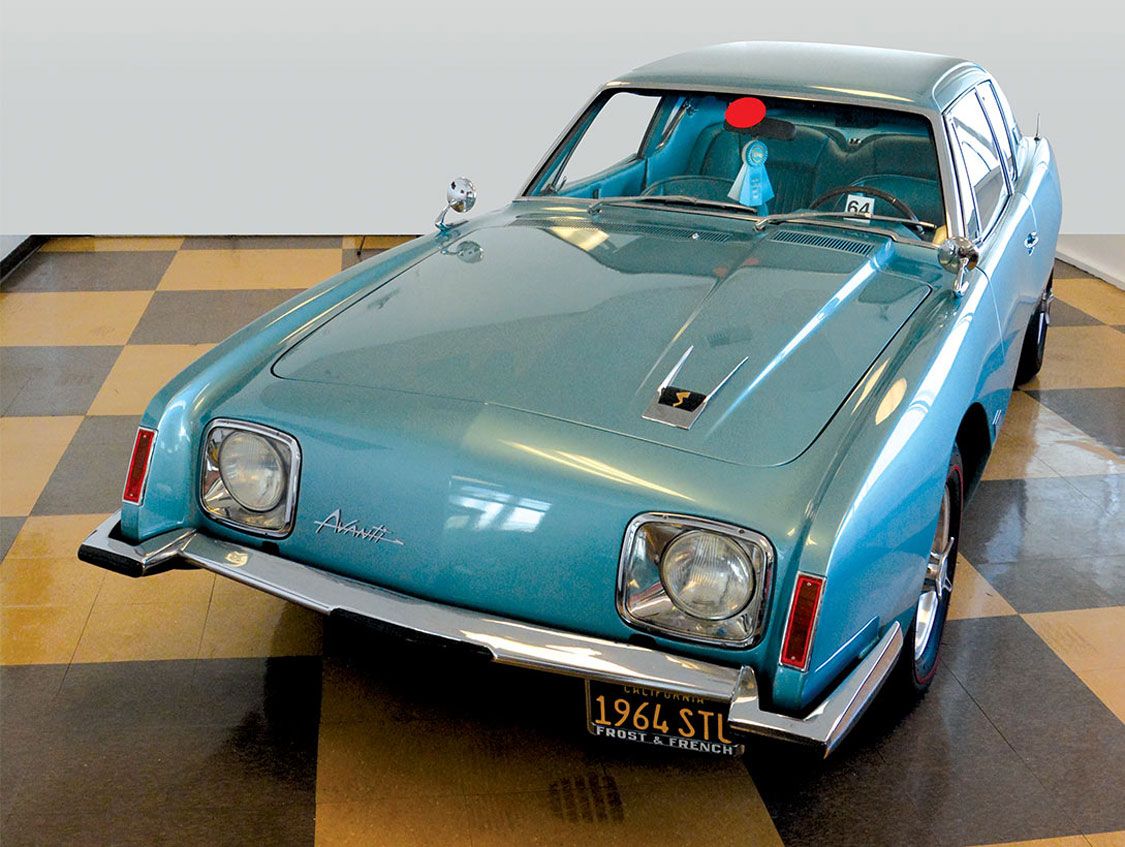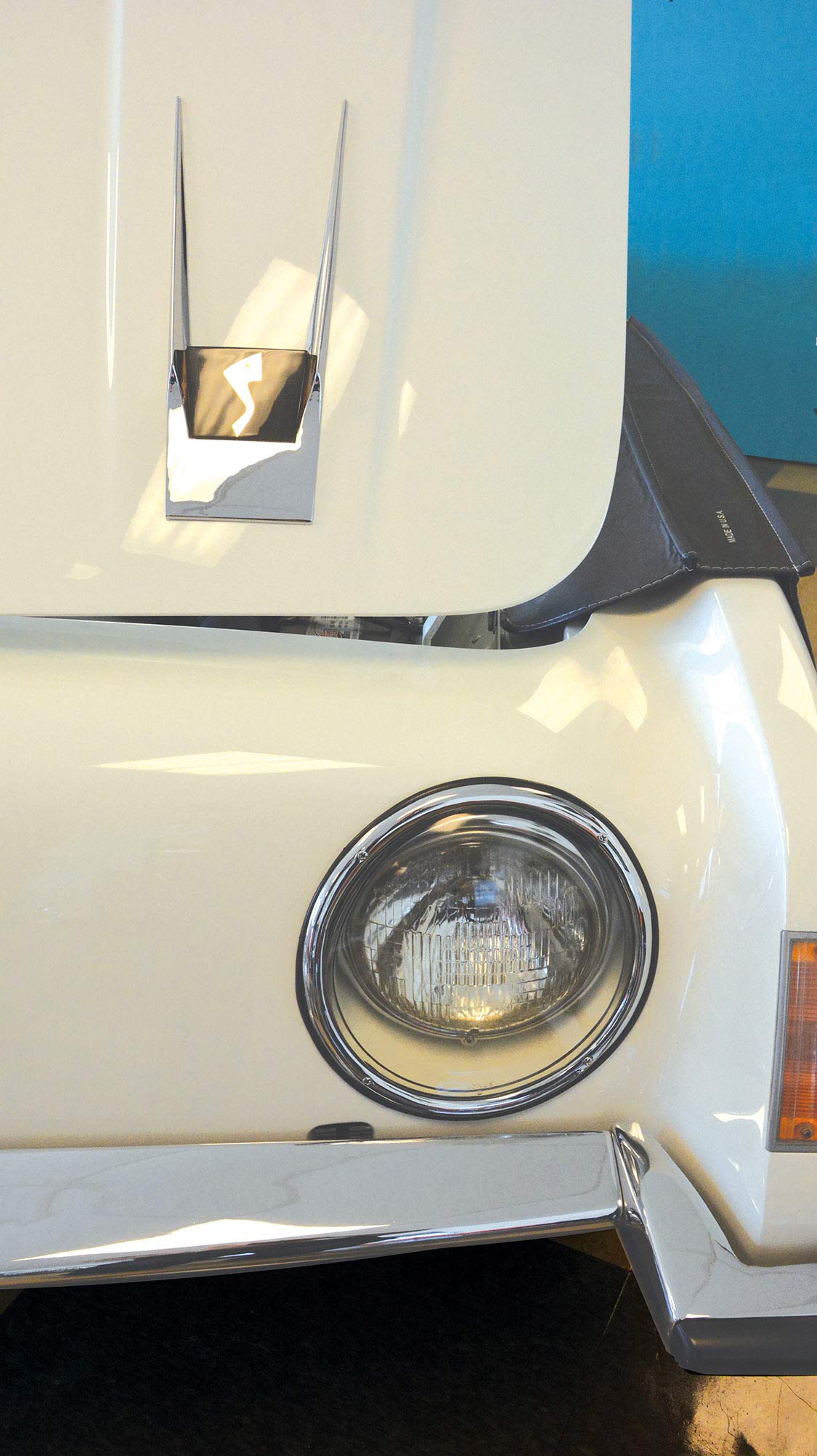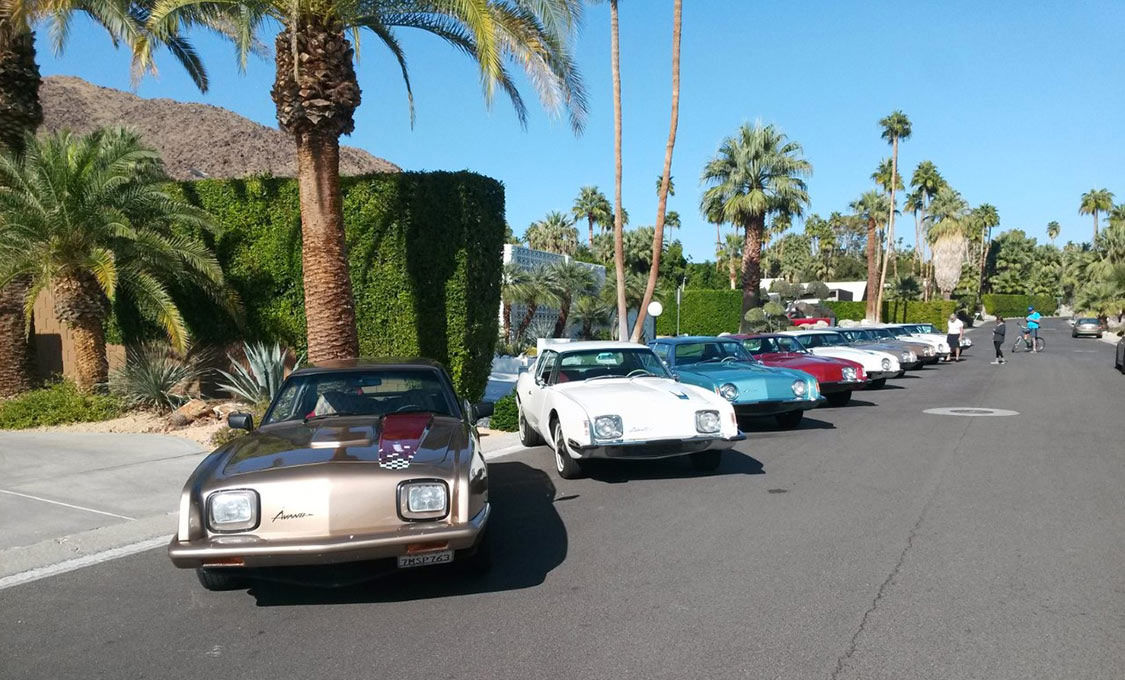 MICHAEL ECKERSON
.
January 24, 2023
.
All Feature Vehicles
MICHAEL ECKERSON
.
January 24, 2023
.
All Feature Vehicles

Studebaker marketed the Avanti as “America’s only four-passenger high-performance personal car.” Everything about this coupe was meant to scream “modern!”, from the aircraft-inspired dials to the name, which comes from the Italian word meaning forward, a number of innovations in the Avanti are still featured in cars today.

The Avanti was the brainchild of Sherwood Egbert, president of Studebaker. Designed by prolific industrial designer Raymond Loewy, a Franco–American designer who achieved fame for the multitude of design efforts across a variety of industries. He was recognized for this by Time magazine and featured on its October 1949 cover.

Raymond Loewy has been called “The Father of Streamlining” and “The Father of Industrial Design”. Loewy has an impressive portfolio of recognizable works including: logo redesigns for Shell, Exxon, Champion and TWA, the Greyhound Scenicruiser bus, Coca-Cola vending machines, the Lucky Strike package, Coldspot refrigerators, the iconic Air Force One design, and of course, the Studebaker Avanti.
Loewy had a special relationship with American car maker Studebaker. Studebaker first hired Loewy in 1936. In 1939 Loewy began work with the principal designer Virgil Exner. Their designs first began appearing with the late-1930s Studebakers. Loewy also designed a new logo to replace the “turning wheel” that had been the Studebaker trademark since 1912. In addition to the iconic bullet-nosed Studebakers of 1950 and 1951, the team created the 1953 Studebaker line, highlighted by the Starliner and Starlight coupes. (Publicly credited to Loewy, they were actually the work of Robert Bourke.

In 1961, Sherwood Egbert enlisted Loewy to design the Avanti. Egbert hired him to help energize Studebaker’s soon-to-be-released line of 1963 passenger cars to attract younger buyers. Lowey was given a short 40-day schedule to produce a finished design and scale model. He recruited a team consisting of experienced designers, including former Loewy employees John Ebstein; Bob Andrews; and Tom Kellogg, a young student from the Art Center College of Design in Pasadena, California.
The Avanti team worked in a house leased in Palm Springs, California. Each team member had a role: Andrews and Kellogg handled sketching, Ebstein oversaw the project, and Loewy was the creative director and offered advice. The Avanti went into production a few months later. It was a Studebaker Avanti for less than two model years, then continued as the Avanti II until 1983.


In 1963 the public was excited by the brand new Avanti, which drew many to Studebaker showrooms. It was upscale and nicely equipped. The 1963 and 1964 models each had a $4,445 base price, when a less practical Chevrolet Corvette Sting Ray two-seat coupe cost $4,252. Only 3,834 were built in 1963 and just 809 were classified as 1964 models. The way to recognize the difference between the two models is the 1963 Avanti had round headlight surrounds and the 1964 model had square ones.

Studebaker was more than a century old when the Avanti debuted. Studebaker began making horse-drawn wagons in 1862 and produced its first cars (electric models) in 1902. The visually unique 1963-64 Studebaker Avanti was among the most daring of the 1960s American cars, a modern masterpiece with totally unique styling. One of the notable features of the Avanti is the absence of a front grille. This coupe was one of the first bottom-breather constructions, in which the front-mounted engine cooled from air sucked up beneath the front of the vehicle.
… Avanti was among the most daring of the 1960s American cars, a modern masterpiece with totally unique styling

The Avanti was designed with advanced safety features, including a built-in roll bar, padded interior and door latches that became structural body members when closed. It was the first mass-produced fiberglass-body four-passenger American car. It also was the first such car to use caliper-style disc brakes. Wind-tunnel testing had not been realized in that era, but the Avanti nevertheless was highly aerodynamic. Loewy and his team had just guessed at the car’s slippery shape.
An Avanti equipped with a supercharged V-8 was one of the fastest 1960s automobiles. A supercharged model driven by legendary driver Andy Granatelli reached 168 mph, while a modified R3 version reached 196 mph – a staggering speed for a 1960s production street car. An unbelievable twenty-nine Bonneville speed records were eclipsed by a supercharged Avanti.


There were a number of complications that saddled the Avanti production, including problems that arose because Sherwood Egbert rushed the car into production. At this time, Studebaker company was quietly having trouble staying afloat. Further complicating the matter, production was delayed because Molded Fiberglass Co., (which also built Corvette fiberglass body parts) was unable to produce the Avanti bodies correctly. This forced the beleaguered Studebaker to manufacturer its own fiberglass bodies. Making matters worse, the word was out that Studebaker was having financial problems and might go out of business. In fact, it closed its South Bend operation in December, 1963, when the last 1964 Avanti barely left its plant.

The Avanti II was a continuation of Studebaker’s 1963-64 Avanti produced from 1965-1982. These continuations of the classic were mostly hand-built and whose production was overseen by former Studebaker dealers Leo Newman and Nathan Altman. The Avanti II retained the Lark convertible chassis but was outfitted with a small-block Chevy Corvette V-8 engine. The performance upgrade required a higher hoodline to accommodate the taller engine. The new models were offered with “stock” paint colors and interior trims. The Avanti II could be done in virtually any configuration the customer wanted. This car was a great buy early on, and only a bit less-so through the ‘70s despite steady price escalation, mostly due to inflation. Workmanship deteriorated over time, especially after Altman’s untimely death in 1976.


The Studebaker National Museum’s facility opened in 2005 in South Bend, Indiana. The design of the facility is reminiscent of former Studebaker buildings built in the 1920s and 1930s, and blends in nicely with the architecture and design elements of the surrounding neighborhood. The museum displays a variety of vehicles produced by the Studebaker Corporation. The collection focuses on the century-long history of the Studebaker Corporation’s wagons, cars, trucks, military vehicles, and carriages and includes more than 70 vehicles and numerous photos and displays as well as a huge archive of photos and documents not on display. Among the many highlights of the exhibit are several Studebaker Avanti models. The museum is located at 201 South Chapin Street, South Bend, Indiana. The LA County Museum of Art now owns Loewy’s personal Avanti.

Today there remains countless enthusiasts that steward the Avanti. They are keepers of the history and take pride in ownership. Clubs gather in support of the marque. The site of a grouping of Avantis is a rare and unique opportunity to get close to these special vehicles with such automotive prominence. Whether we talk about the original and rare Avanti or the later iteration of the updated Avanti II, the style still attracts attention. No car has ever looked like it, and most likely, none ever will.
Special thanks to Joe Zeiger of the Southern California Chapter of the Avanti Owners Association International. He was instrumental in gathering many of the facts about this unique piece of automotive history that only an enthusiast would know.
The Avanti was designed with advanced safety features, including a built-in roll bar, padded interior and door latches that became structural body members when closed


Share Link